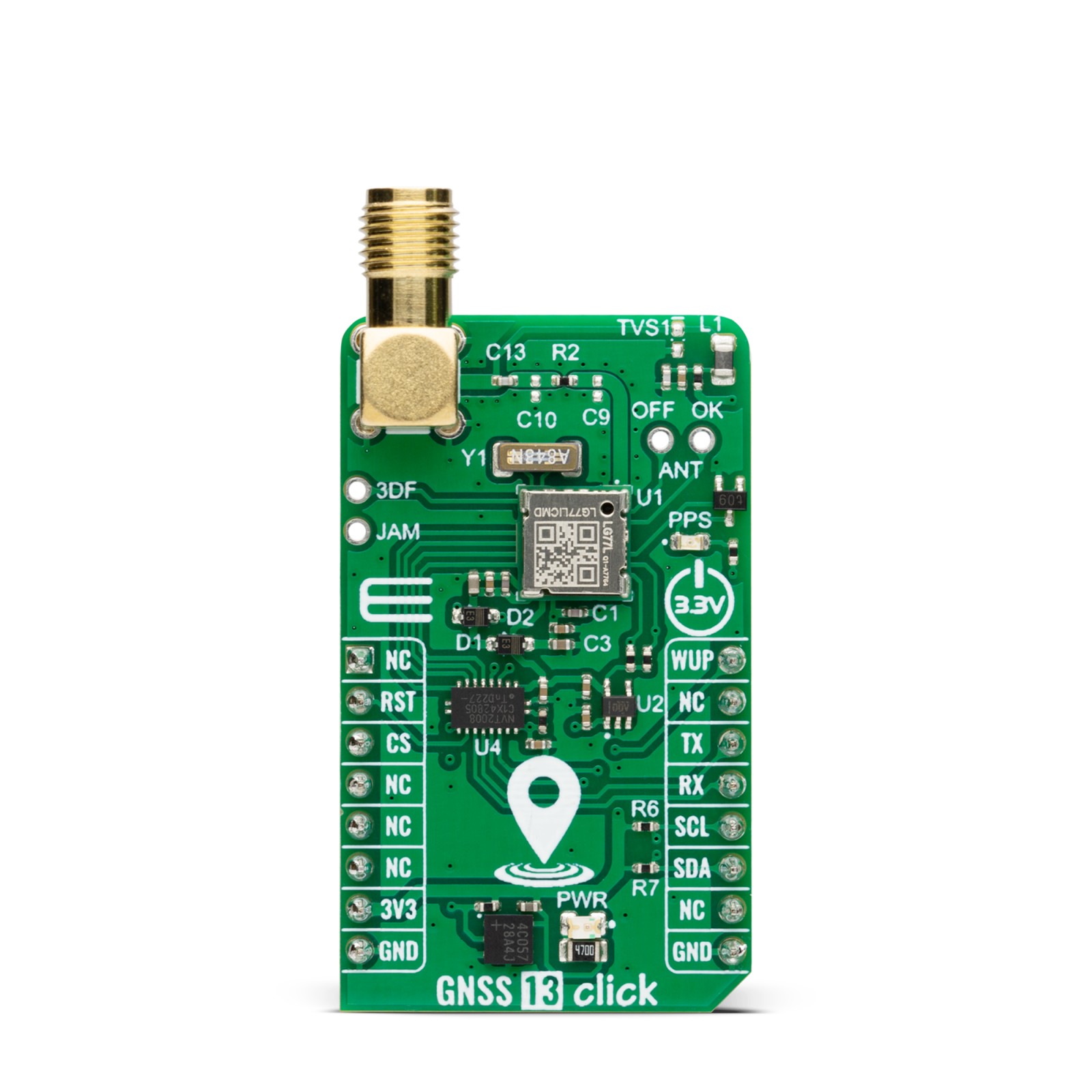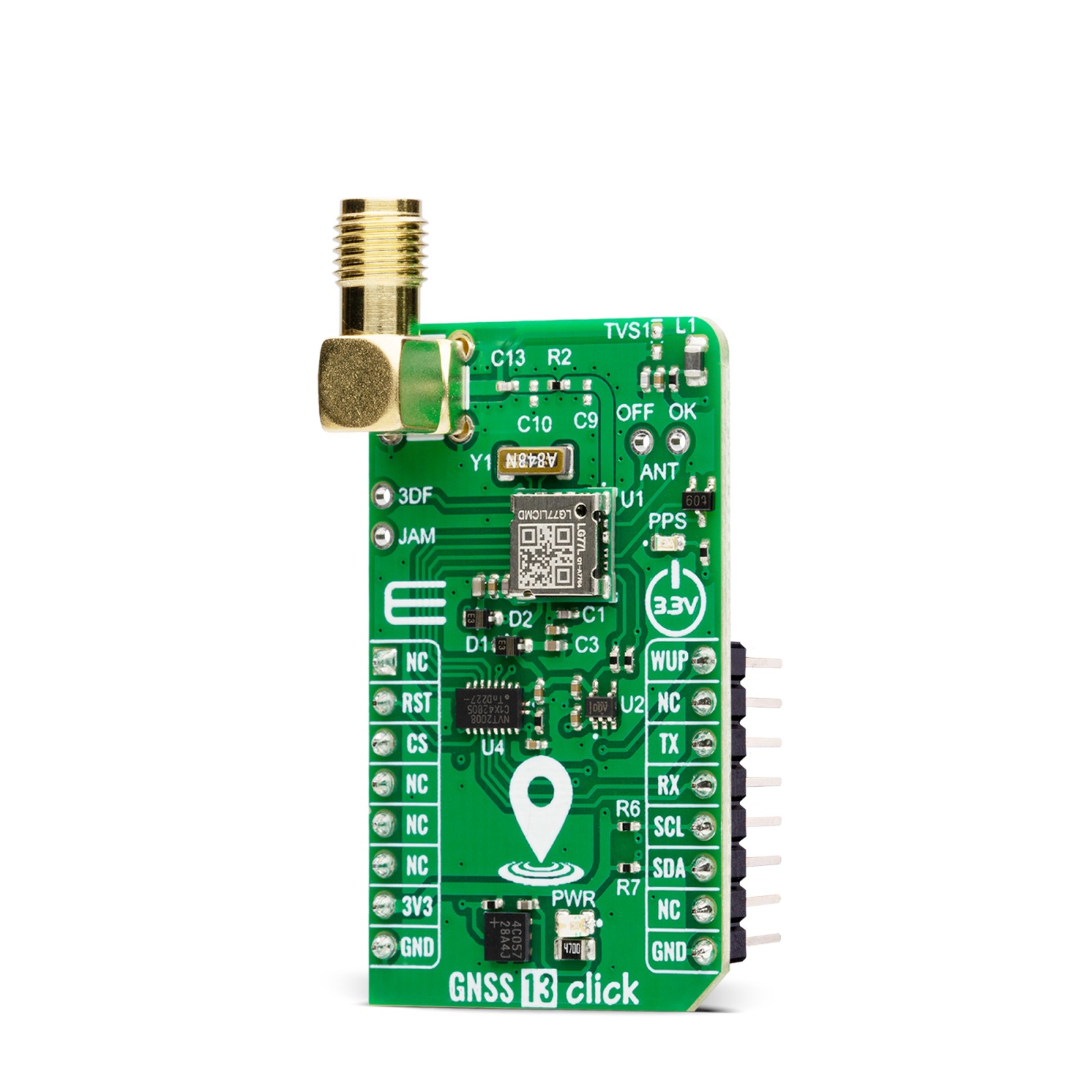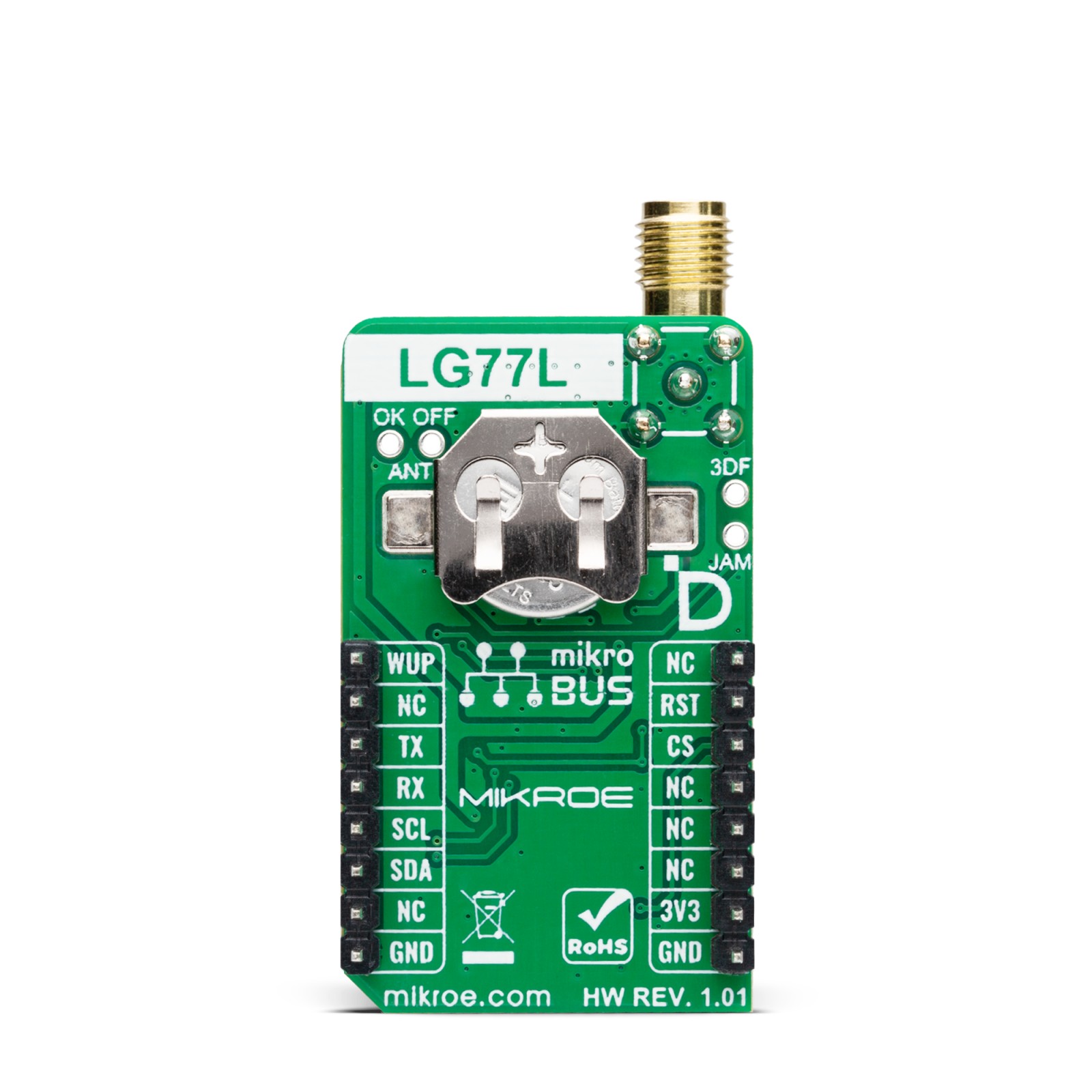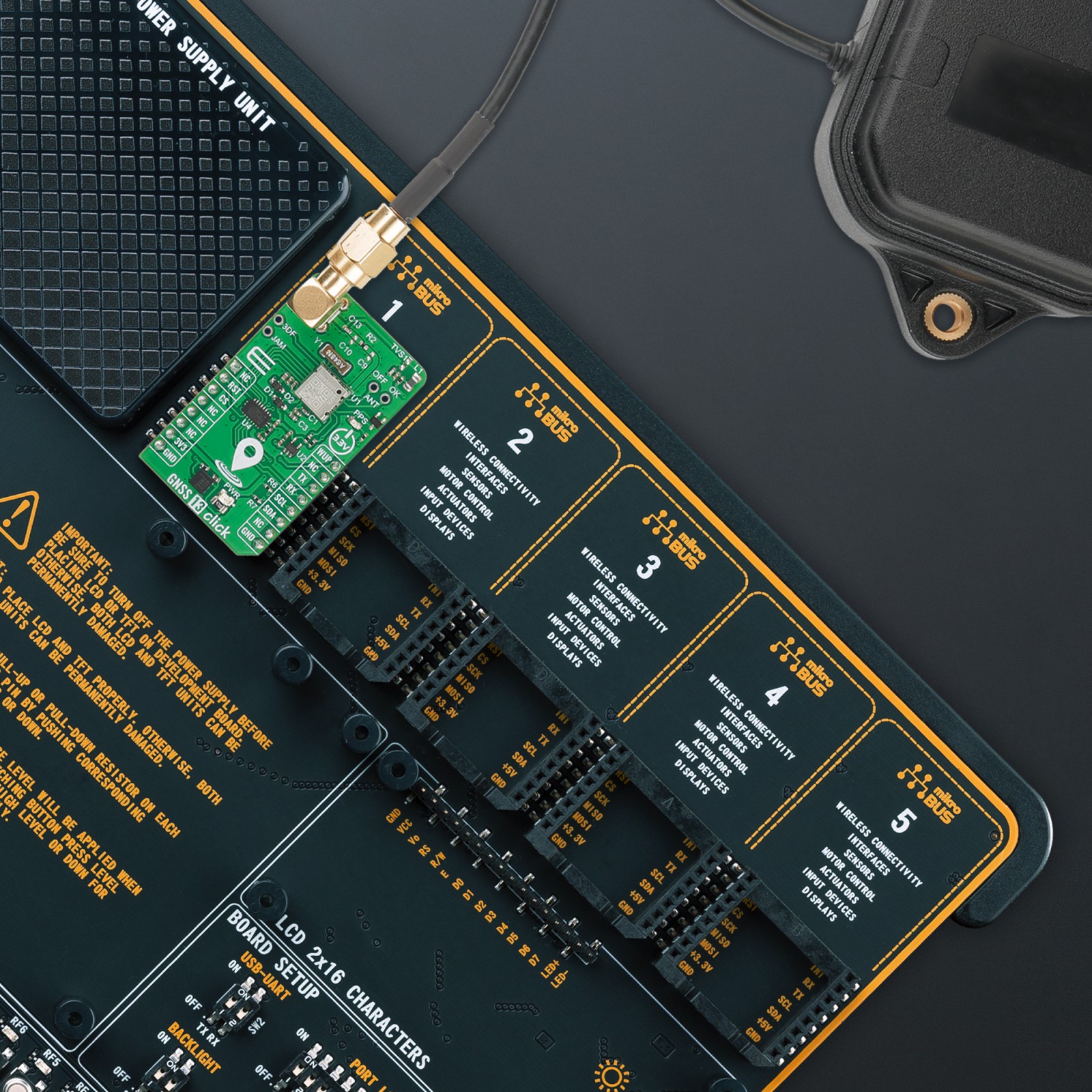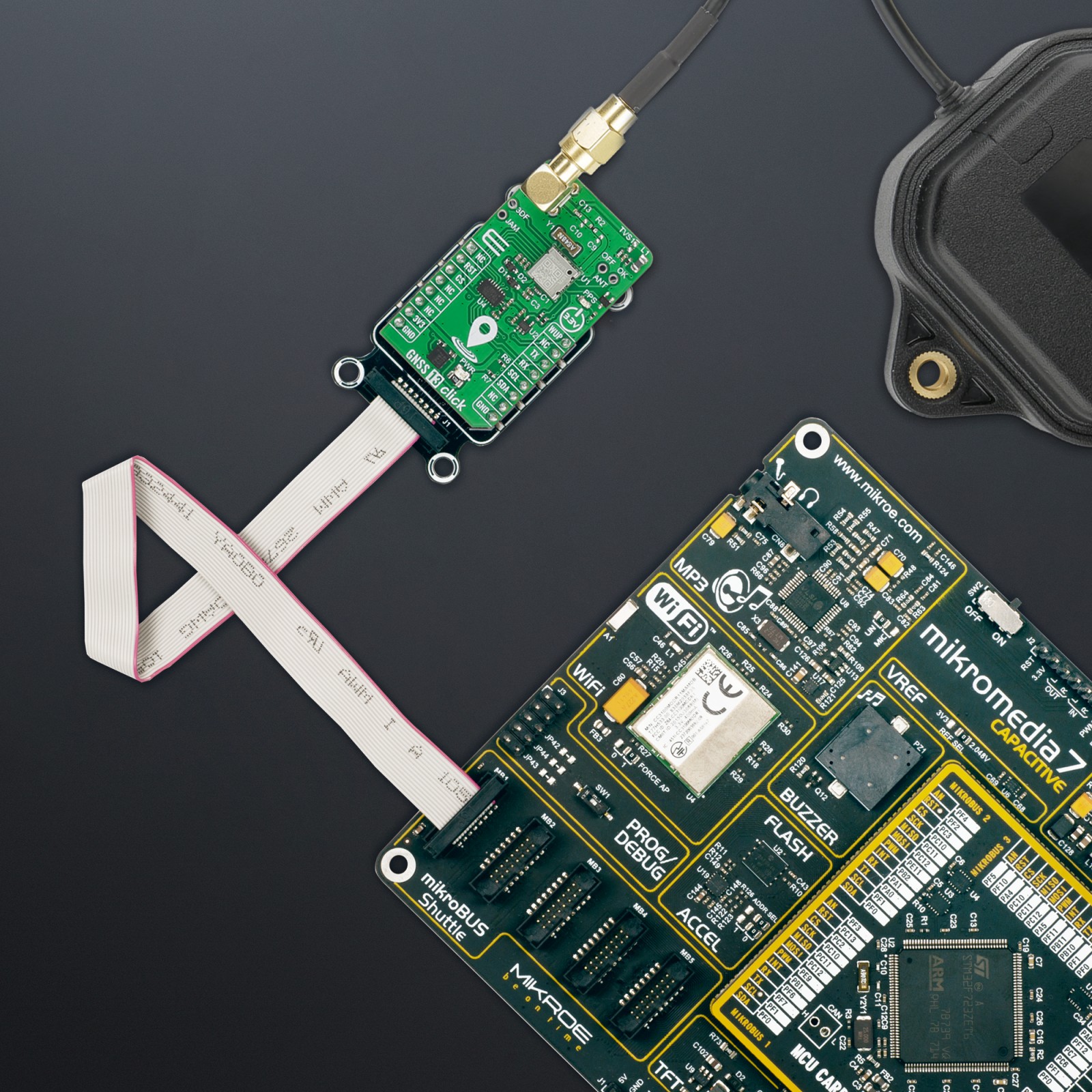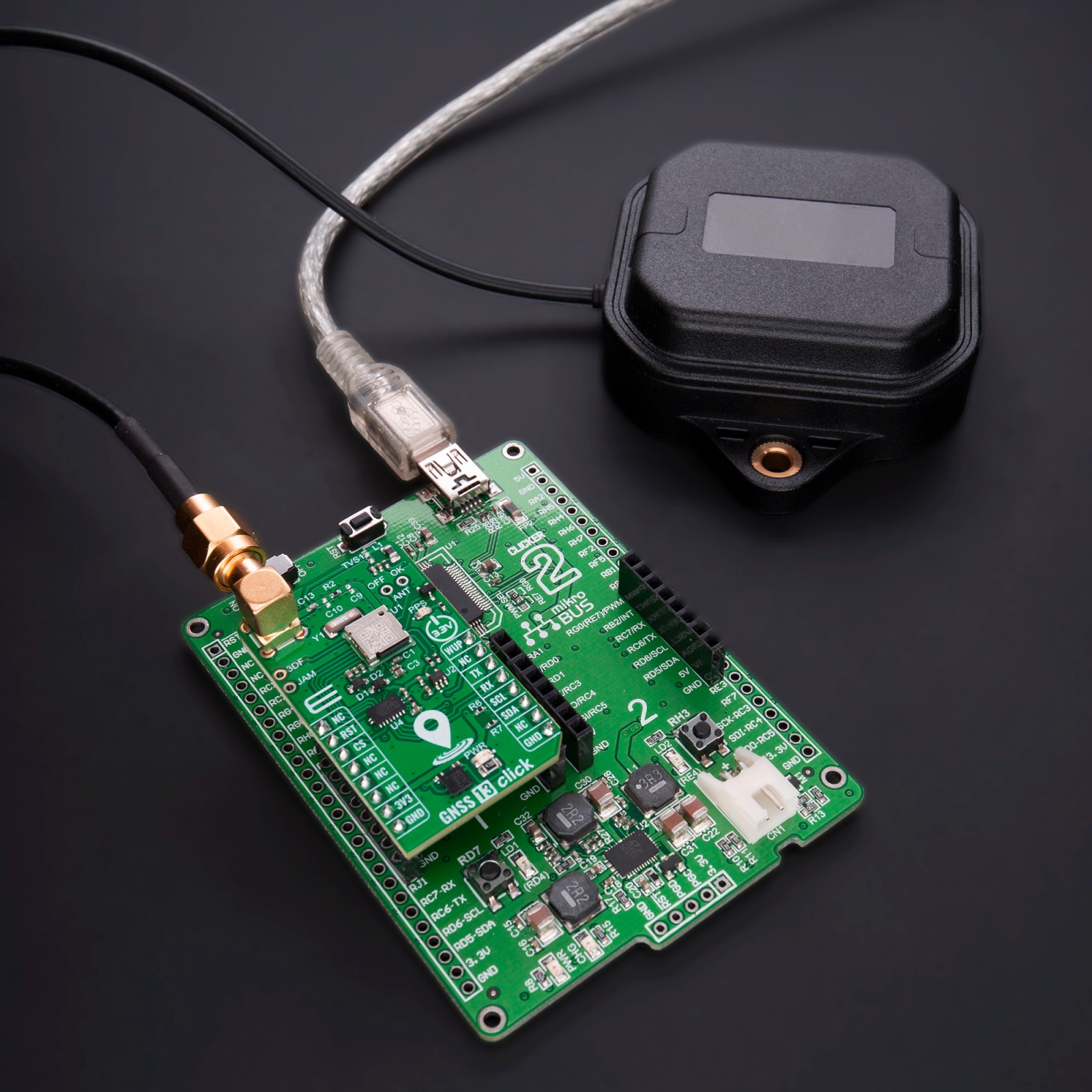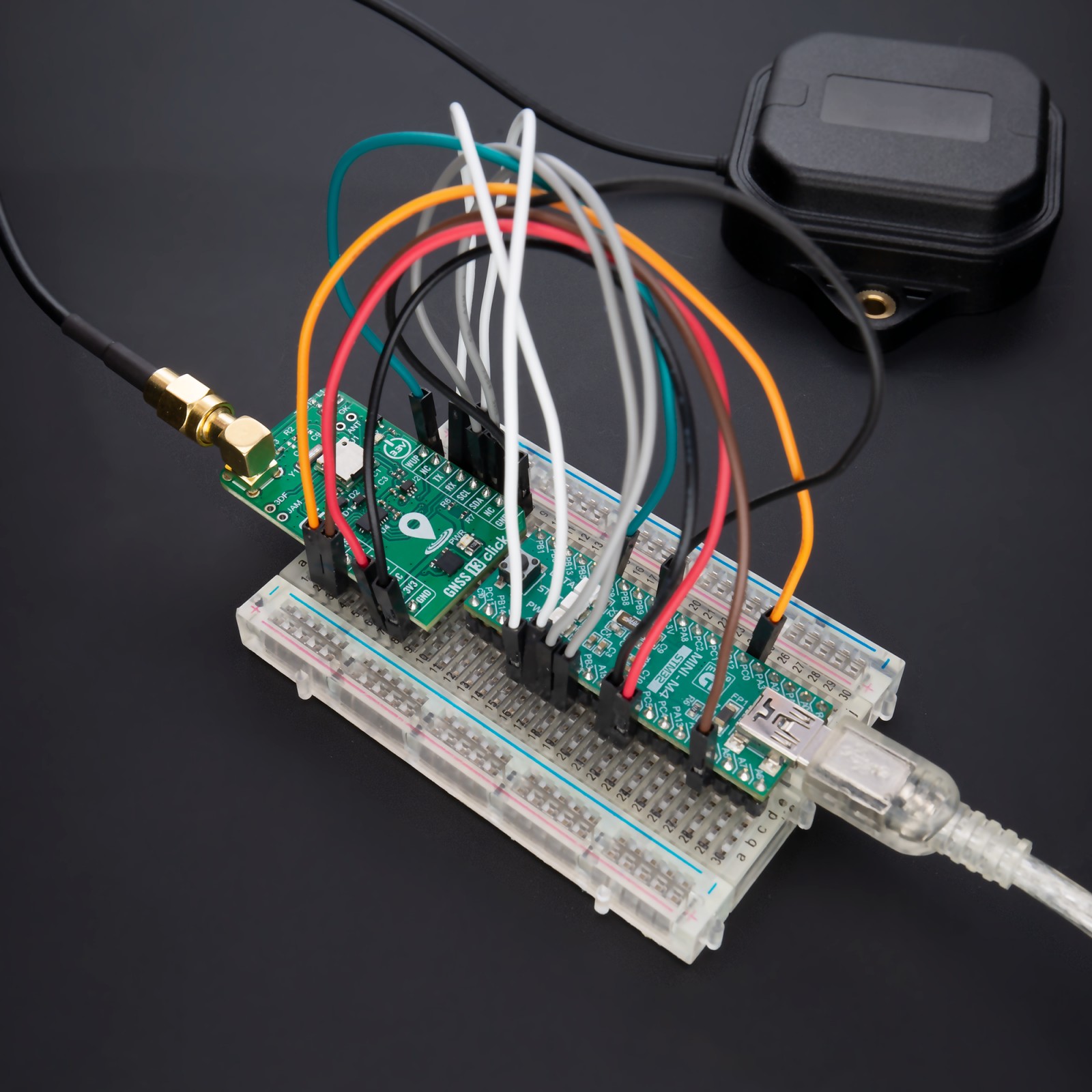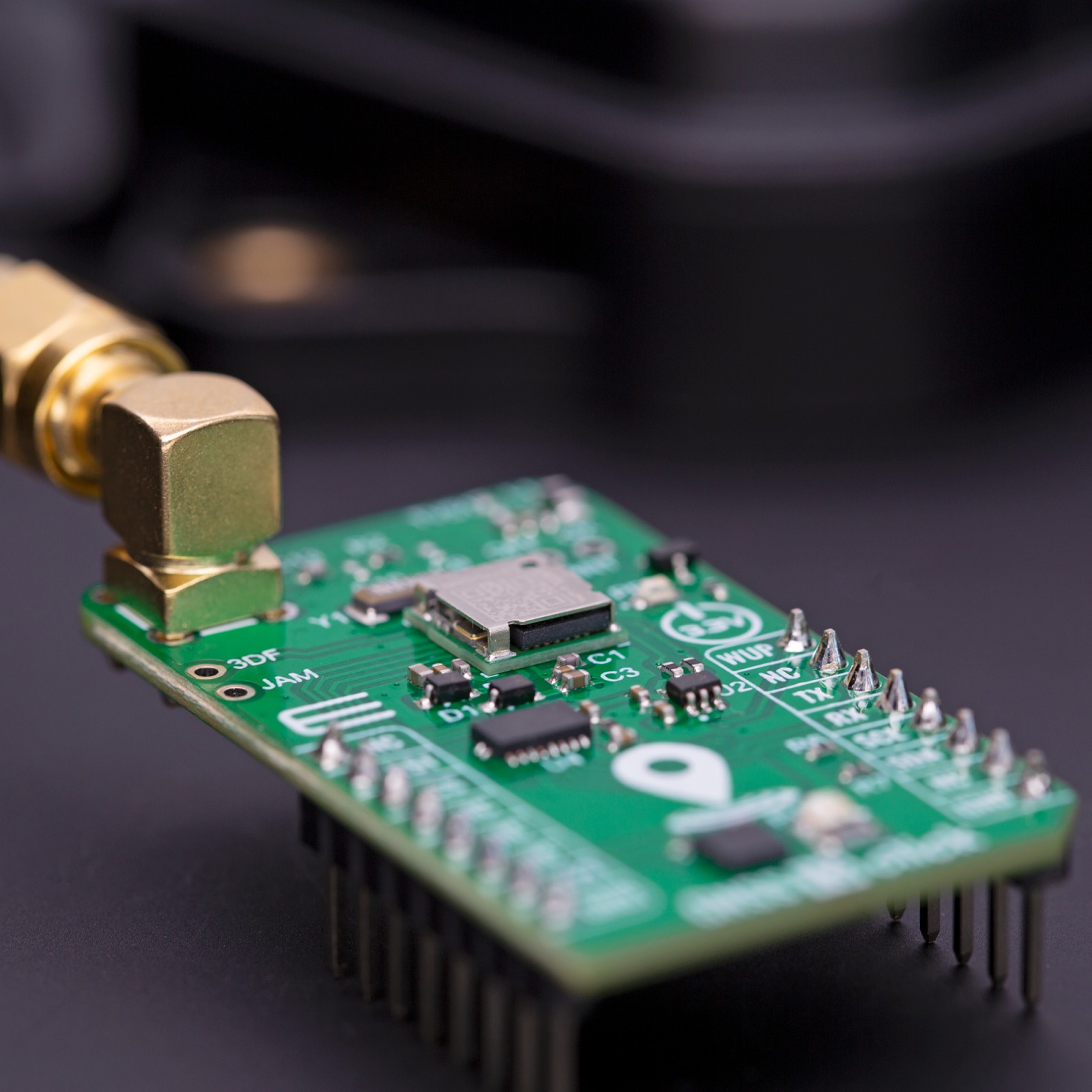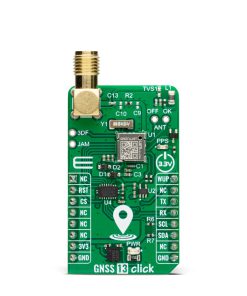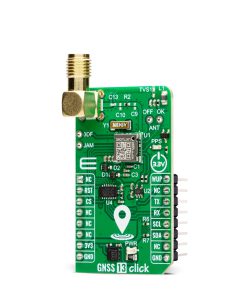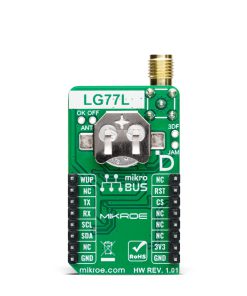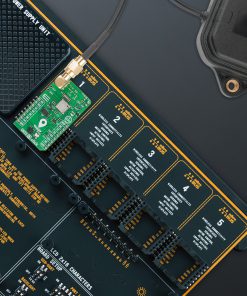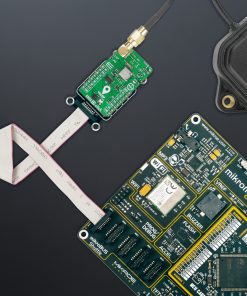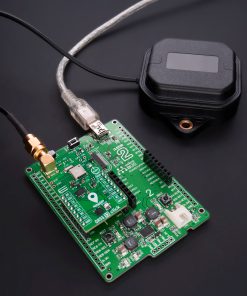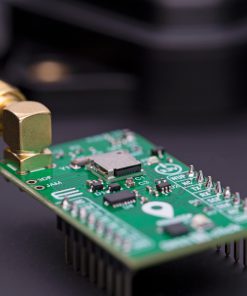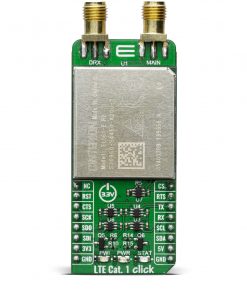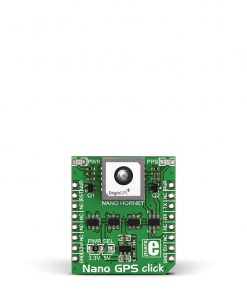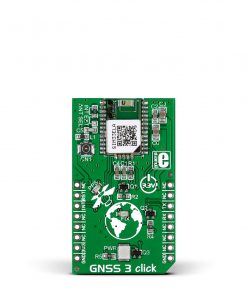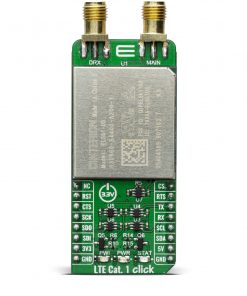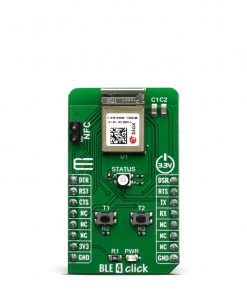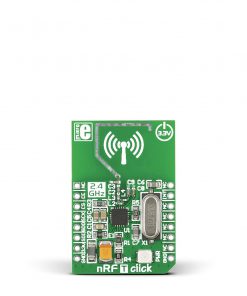GNSS 13 Click is a compact add-on board that provides positioning, navigation, and timing services. This board features the LG77LICMD, a global-region standard-precision GNSS module from Quectel Wireless Solutions. This module utilizes concurrent reception of up to three GNSS systems – GPS, GLONASS (or BeiDou), and Galileo, maximizing position availability, especially under challenging conditions such as deep urban canyons. By combining EASY™ (Embedded Assist System), an advanced AGNSS feature, with GLP (GNSS Low Power), a low-power mode, the LG77LICMD module achieves high performance, low power consumption, and fully meets industrial standards. It also has a configurable host interface, anti-jamming technology, and a multi-tone active interference canceller. This Click board™ is ideal for industrial and consumer applications such as asset trackers without compromising GNSS performance.
GNSS 13 Click is fully compatible with the mikroBUS™ socket and can be used on any host system supporting the mikroBUS™ standard. It comes with the mikroSDK open-source libraries, offering unparalleled flexibility for evaluation and customization. What sets this Click board™ apart is the groundbreaking ClickID feature, enabling your host system to seamlessly and automatically detect and identify this add-on board.
 tRF Click
1 × R1,050.00
tRF Click
1 × R1,050.00  Color 20 Click
1 × R225.00
Color 20 Click
1 × R225.00 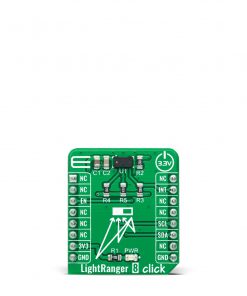 LightRanger 8 Click
1 × R260.00
LightRanger 8 Click
1 × R260.00  LPG Click
1 × R335.00
LPG Click
1 × R335.00 
